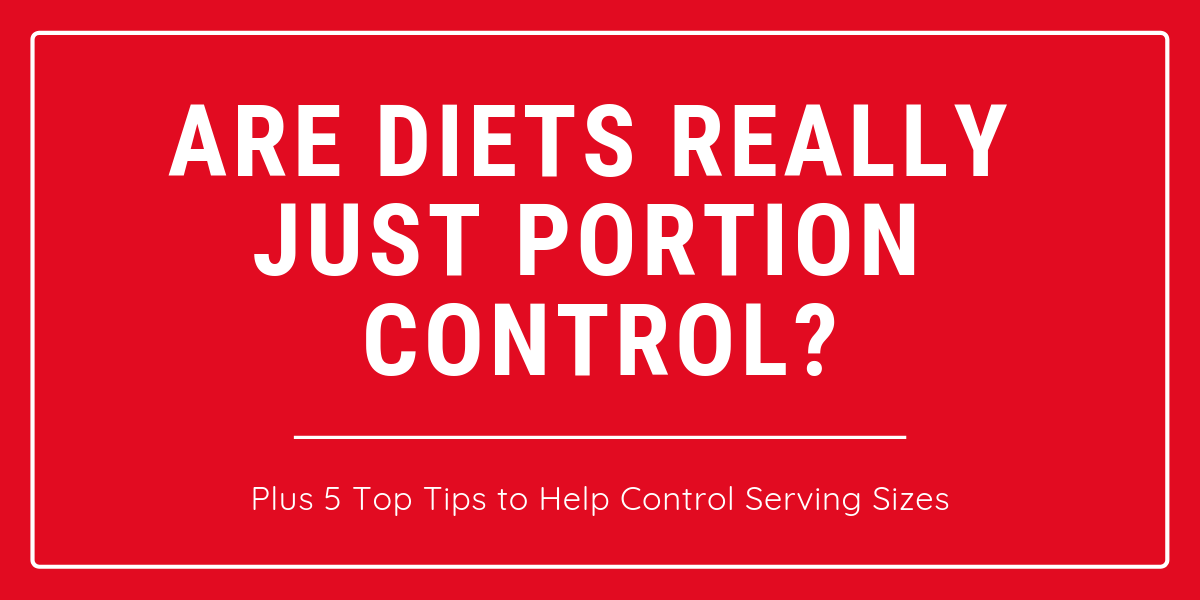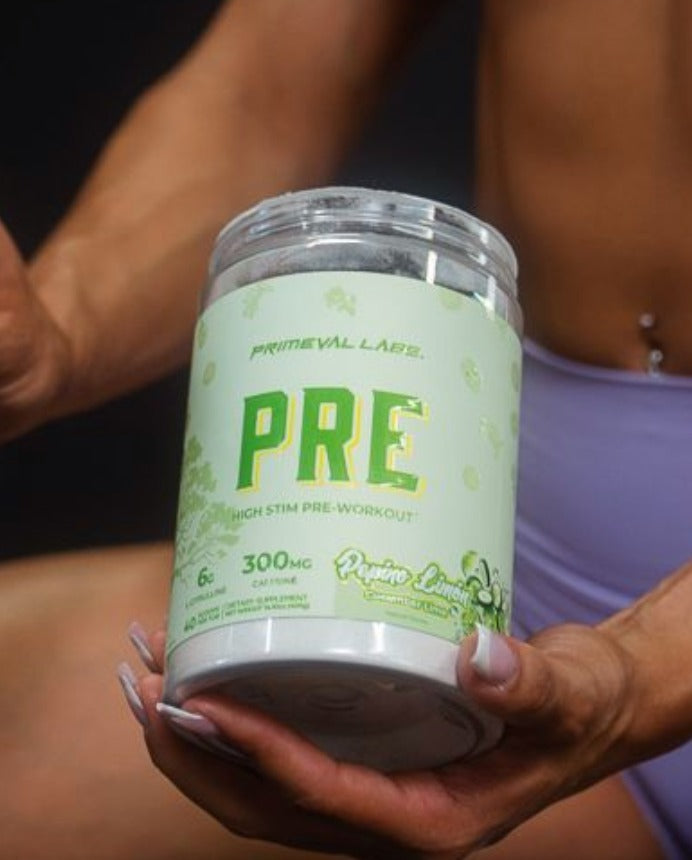If you want to know the truth about dieting and portion control for maintaining a healthy bodyweight, then you want to read this article.
Maintaining a healthy body composition, as well as overall wellness, not only involves watching what you eat, but also how much you eat.
In other words, the number of calories you consume each day does matter, despite what you may have seen or heard in magazines, social media, or “fitness” blogs.
No matter how “clean” your diet is, if you consume more calories than you need, you will not lose weight. And on the flip side, if you do not consume enough protein and total calories you will not build muscle.
It’s as simple as that.
Unfortunately, the fitness and nutrition industries have done a phenomenal job of mucking things up when it comes to telling the general public what foods to eat or how many calories they need to eat to achieve their goals.
As a result of this, year after year, we are inundated by one diet after another that promises to deliver the results you want if you just eliminate “x” food from your eating plan.
And they will all work.
But the reason they work is not that you eliminated gluten or added sugars or carbohydrates or red meat or even eating in a tiny 8-hour window.
The reason any diet can and will work is that it reduces the number of calories you eat by limiting the portions of food you consume.
In other words, dieting for weight loss is all about portion control.
What is Portion Control?
A portion is simply how much food you choose to eat at one time. Portion control refers to your ability to limit how many portions or how big of a portion you eat.
For example, let’s say that a friend brings over a large double pepperoni and jalapeno pizza that contains 12 slices. One “portion” of that entire pizza is one slice. The “control” aspect comes in restraining yourself from pounding back the entire pizza in one sitting and only eating one, two, or three slices depending on your calorie needs/availability.
However, not everyone knows what a suitable portion for their diet, training, and physique goals is. In fact, much of today’s current obesity epidemic can be attributed to a lack of portion control.
In an ideal world, every food we eat would have the exact amount of calories, carbohydrates, fat, and protein down to the last gram floating above it. You can get pretty close to knowing this if you buy and meal prep all of your own food.
But, this isn’t an ideal world, and there will be many occasions in which you find yourself where you are presented with a buffet of food and have no idea how many calories, protein, fat or carbs it contains. Sure, you can eyeball certain things like a grilled chicken breast. But, if you go to a friend’s house or out to eat and get a casserole-type dish like lasagna, good luck estimating the macronutrient profile of that meal.
But, don’t let that discourage you.
While you may not know the exact amount of calories it contains, you can limit overeating, as well as the subsequent fat gain, by exercising portion control.
5 Best Tips for Better Portion Control
Utilize Your Plate
Not everyone has the time, desire, or ability to pull out a food scale and weigh each portion they eat during mealtime. The good news is that you don’t always have to rely on the scale to tell you what’s a reasonable portion.
You can use the same plate you’re planning to eat your meal off of as a rough guide to portion control. This can help you figure out how to eat a well-balanced meal as well as one that’s tailored to your macronutrient needs.
Generally speaking, here’s how the plate of a healthy meal looks:
- Vegetables or salad: ½ of the plate
- Lean protein: ¼ of the plate
- Complex carbs: ¼ of the plate
- Healthy fats: Half a tablespoon
Now, keep in mind, this is just an estimate for a person with average calorie needs. If you are looking to gain mass, you may need to eat larger portions of food or have a second helping. On the flip side, if you are trying to lose body fat, you might have a slightly smaller portion of complex, starchy carbohydrates and more protein and green vegetables.
Avoid Eating Out of the Box
At the end of a particularly stressful workday, or even those occasion when we’re bored on the weekends, it’s incredibly tempting to plop down on the couch with a bag of potato chips and start eating right out of the bag while zoning out to a show on Netflix.
While this might seem like a great way to de-stress and unplug from the rigors of everyday life, it’s also causing you to eat way more food than you actually need.
Rather than pile through the whole container in one sitting, measure out a single portion of your snack and put it into a bowl or on a plate to help keep calorie intake under control.
Tip: Try measuring out a serving size using measuring cups or a food scale for a week or two until you train your eyes to recognize what an appropriate serving size of your favorite snack is.
Take Your Time Eating
Today, we’re busier than ever, constantly bouncing from one task to another all in the effort to be as successful as possible. In the endless frenzy that we call everyday life, it’s tempting to eat on the go, or when we do have the opportunity to sit down and eat, we shovel it down so quickly, we’re asking for the check before the last mouthful of food is swallowed.
Mealtime is meant to be a time for socializing, relaxation, and enjoyment. The frenzied pace with which the average person eats today is secretly causing them to overeat and slowly but surely adding unwanted pounds to their frame.
The reason for this is that it takes time for your brain to receive the signal from your stomach that it’s had enough to eat. Plowing through your plate of food doesn’t allow time for your body to tell your brain that you’re full. And it may also lead to indigestion, bloating, and GI distress.
Slow down, take some time to chew (and enjoy) your food. This has been shown in research to increase satiety, decrease hunger, and reduce overall calorie intake.[1,2]
Use Smaller Plates
The population’s waistline isn’t the only thing getting bigger...so too are the containers from which we eat our food.
Don’t believe us?
Just take a look at the size of the plate your dinner comes on the next time you go out to eat at a restaurant. Those plates are the size of mini-flying saucers!
Research indicates that the size of the plate, glass, and silverware you use during mealtime can influence how much food you end up eating.[3,4,5]
For example, one study found that nutrition experts served themselves 14.5% more ice cream when using larger serving spoons and 31% more ice cream when provided larger bowls.[6]
Another study found that individuals consumed 77% more pasta when given a large bowl versus a medium-sized one.[7]
Now, if you go out to eat, you don’t get to choose the size plate they bring your food on, but when at dinner parties or social engagements, opt for the smaller-sized dinnerware and you’ll help yourself to exercise better portion control.
When it comes to eating out at restaurants, assume that any meal you order is enough for two people and simply only eat half of it. If you find yourself having trouble exercising self-control when the whole plate of food is in front of you, simply ask the waiter to only bring you half of the food and box the other half before the food is even brought to the table.
Remove the Diet Complex
The term “diet” has long been associated with deprivation, starvation, elimination, and extremes. As such, diets are viewed as something negative that we have to do when we’ve been “bad” or cheated on our diets.
This negative mindset creates an unhealthy relationship with food and only feeds into the fad diet culture that engrosses the population year after year.
In reality, the word “diet” simply refers to the foods that you eat on a daily basis. It’s not meant to be something that is extreme or short-term.
Diets don’t have to be a punishment or consist only of juice detoxes, carbohydrate restriction or any other nonsense. The truth is your diet can and should be enjoyable. That’s because you have control of what foods you eat and how much of those foods you choose to eat.
Creating a diet or nutrition plan right in nutritious foods prepared in a style you enjoy is the best way to create a balanced relationship with food, avoid the shenanigans of fad diets, and prevent overeating.
References
- Li, J., Zhang, N., Hu, L., Li, Z., Li, R., Li, C., & Wang, S. (2011). Improvement in chewing activity reduces energy intake in one meal and modulates plasma gut hormone concentrations in obese and lean young Chinese men. The American Journal of Clinical Nutrition, 94(3), 709–716. https://doi.org/10.3945/ajcn.111.015164
- Angelopoulos T, Kokkinos A, Liaskos C, et al. The effect of slow spaced eating on hunger and satiety in overweight and obese patients with type 2 diabetes mellitus. BMJ Open Diabetes Res Care. 2014;2(1):e000013. Published 2014 Jul 2. doi:10.1136/bmjdrc-2013-000013
- Wansink, B., Painter, J. E., & North, J. (2005). Bottomless bowls: why visual cues of portion size may influence intake. Obesity Research, 13(1), 93–100. https://doi.org/10.1038/oby.2005.12
- Wansink, B. (2010). From mindless eating to mindlessly eating better. Physiology & Behavior, 100(5), 454–463. https://doi.org/10.1016/j.physbeh.2010.05.003
- Wansink, B., & van Ittersum, K. (2005). Shape of glass and amount of alcohol poured: comparative study of effect of practice and concentration. BMJ, 331(7531), 1512–1514. https://doi.org/10.1136/bmj.331.7531.1512
- Wansink, B., van Ittersum, K., & Painter, J. E. (2006). Ice cream illusions bowls, spoons, and self-served portion sizes. American Journal of Preventive Medicine, 31(3), 240–243. https://doi.org/10.1016/j.amepre.2006.04.003
- van Kleef, E., Shimizu, M., & Wansink, B. (2012). Serving bowl selection biases the amount of food served. Journal of Nutrition Education and Behavior, 44(1), 66–70. https://doi.org/10.1016/j.jneb.2011.03.001









Leave a comment
This site is protected by hCaptcha and the hCaptcha Privacy Policy and Terms of Service apply.